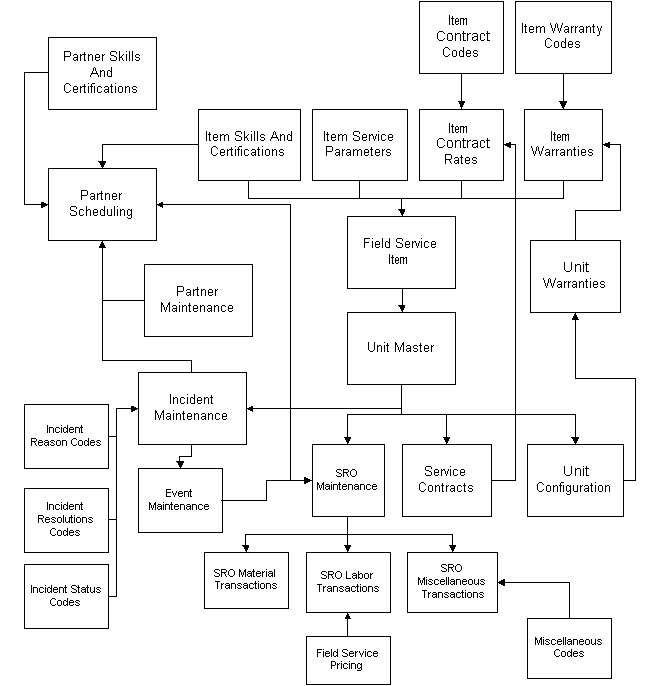About Items, Units and Servicing

Units
Units are serial-tracked items that are serviced by your company. They can be either the top-level finished good or any subcomponent. A unit may or may not exist in the standard CloudSuite Industrial serial master. Units can be added to the system in several different ways:
- Run utilities that create the unit upon the completion of a job when the finished goods are put into inventory. These utilities can be run every night on the Background Queue, to pick up any new units that have been created during the previous day.
- Select Auto Create Unit on Shipment on the Service Parameters form to automatically create new units whenever a serial-tracked item is shipped on a customer order.
- Create a unit manually with the Units form.
Configuration Tracking
You can store information about the parts that make up a unit in a structure called the unit configuration. The unit configuration is useful if your company manufactures equipment that consists of subcomponents that can be replaced later. Each component can have its own serial number and warranties associated with it. The installed and removed date is recorded at the component level, so users can view the As Built, As Is and As Was for any date.
- As Built: The Bill of Materials used when the unit was manufactured, created, or assembled
- As Is: The components that currently exist on the unit today
- As Was: The components that existed on the unit at any given time in the past
Warranty Tracking
Warranties are tracked at both the unit and the component level. For example, a car has one warranty, but the tires on the car have a separate warranty. The system tracks whether a warranty is given by the manufacturer or through the vendor for purchased parts existing on a unit. You can set warranty durations by both expiration date and a meter amount such as miles, impressions, cycles, etc.
Registration History
CloudSuite Industrial tracks each owner of a unit, with the date ownership was taken by the consumer. Both the Sold To customer and the end consumer are recorded, so if the unit is registered or transferred, the system can record the event.